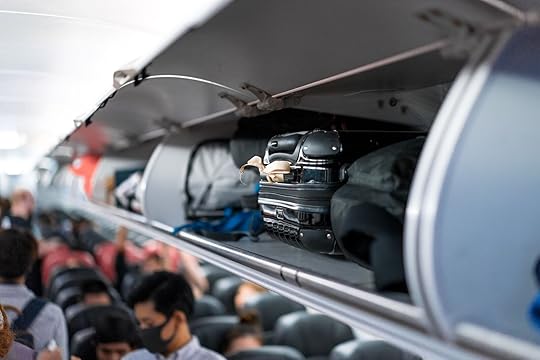Chaotic, Slow, and Delayed: My First Southwest Flight Without ‘Bags Fly Free’

When Southwest Airlines announced in March 2025 that it would get rid of its famous “bags fly free” policy, move to assigned seating, and explore the possibility of a first-class section, it marked the end of an era. The changes seemed unthinkable for an airline that built its reputation on speed and simplicity, and signaled a shift away from trying to differentiate itself. In trying to compete with legacy carriers like United, Delta, and American, Southwest formally abandoned what had once set it apart.
It probably wasn’t a surprising announcement, but it did raise questions about how it would impact Southwest’s business model. For decades, Southwest had succeeded by offering fast turnarounds at smaller airports, avoiding major hubs, and connecting cities for direct flights, rather than offering extended trips with connections. It was more of a point-to-point model, rather than an airline you’d fly for a multi-leg trip with layovers. It was able to maintain that model by having quick turn around times, assisted by quick boarding processes. Unassigned seats and “bags fly free” were a branding tool, but also key to a system designed to keep things moving.
I flew Southwest for the first time after some of the changes went into effect, though assigned seating doesn’t start until 2026, meaning flights now have a double whammy of too many bags and people vying for the best seats available.
After flying, I’m not sure the airline can survive the transformation — at least without sacrificing the goodwill and reputation it’s spent years building.
What my flight was like
Photo: RebeccaDLev/Shuttrstock
On July 6, I boarded a Southwest flight from Reno to San Diego, a 90-minute route I’ve flown dozens of times to see my inlaws. It’s one of the few direct options between the two cities, and for years, Southwest has been the only carrier to serve it. But almost as soon as I arrived at the gate, the impact of the new bag policy became clear.
Nearly every passenger had both a roller bag and a large “personal item”—a backpack, duffel, or overstuffed tote. The boarding area was crowded, loud, and tense. Intercom announcements reminded passengers in boarding group C that they’d likely need to gate-check their bags. Others warned that only standard-sized carry-ons would fit in the overhead bins, not bags with expandable zippers. But no one seemed to listen. Or care.
Once on board, it was obvious that enforcement was minimal. Many bins were already jammed with oversized bags turned sideways — exactly what they warned against — taking up twice the space. Passengers moving toward the rear of the plane quickly discovered there was no room left. The result was a chaotic bottleneck as people doubled back in search of space, while flight attendants tried to coordinate the mess. They asked passengers to place bags under their seats, pleaded with others to rearrange luggage, and intervened when arguments broke out over bin access.
The atmosphere was tense. The crew sounded exhausted and short-tempered. I watched several passengers forcibly rearrange someone else’s bag to make room for their own, snapping the bin door shut with brute force that made me think the clasp was going to break.

Photo: Surachet Jo/Shutterstock
As more passengers boarded what was to be a completely full flight, the situation only got worse. Every aisle seat required someone to stand up so another could squeeze into the middle, further delaying boarding. Announcements became more condescending by the minute—reminders to be kind to one another, phrased like warnings from a high school principal. One ended with: “Thank you to the eight of you out of 135 who are listening.” (Judging by the groans around me, it was more than eight).
Our departure time came. Our departure time went. Soon, flight attendants were looking for the owner of a mysterious green bag. Eventually, they explained: someone had removed a bag from the overhead to make room for their own, and in the process, the displaced bag had made its way to the front of the aircraft, where it was gate-checked without proper tagging.
However, inside that bag was a passenger’s essential medication, and under TSA protocols, gate-checked bags can’t be brought back onto the plane after being removed. The passenger would be allowed to go claim it, but then wouldn’t be allowed to reboard. That left the passenger with a tough choice: fly without the medication or deplane and wait for a different flight. They chose to fly, but were apparently stressed and tense for the duration.
In the end, we departed about 35 minutes late. By today’s standards, that’s not catastrophic. But the mood on board suggested something deeper than a single delayed flight. The crew was visibly frayed and passengers irritable. And the chaos of boarding seemed to hint at a larger breakdown in the airline’s core values. If this flight is any indication, the skies are no longer filled with the “Southwest Love” that once set the airline apart. 
Matador Network's Blog
- Matador Network's profile
- 6 followers



